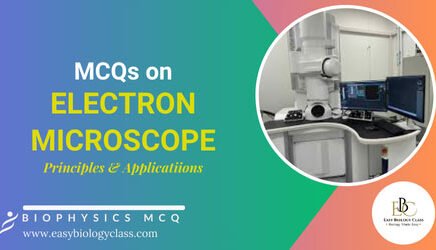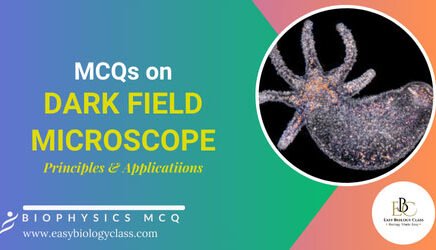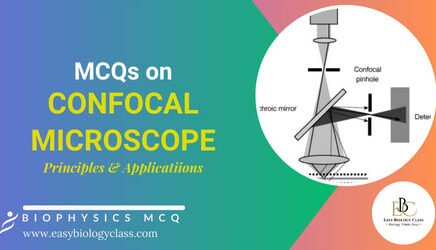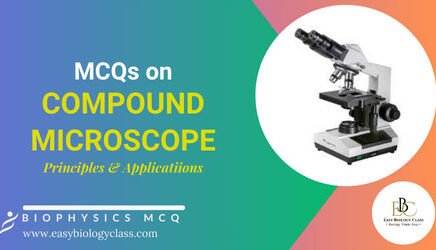
MCQ on Electron Microscope with Answers for Students and Exams
An electron microscope uses a beam of electrons instead of light to magnify specimens. It provides very high resolution, allowing scientists to see structures at […]

An electron microscope uses a beam of electrons instead of light to magnify specimens. It provides very high resolution, allowing scientists to see structures at […]

Dark field microscopy is a technique that enhances contrast by using a special condenser to block direct light. Only scattered light from the specimen enters […]

A confocal microscope is an advanced optical microscope that uses laser light to scan specimens point by point. It employs a pinhole aperture to block […]

A compound microscope is an optical instrument that uses two sets of lenses, the objective and the eyepiece, to magnify small specimens for detailed observation. […]

Radioimmunoassay (RIA) is a sensitive laboratory technique that uses radioactive isotopes to measure the concentration of specific substances, such as hormones or antigens, in biological […]

Western blotting is a laboratory technique used to detect and analyze proteins. It involves separating proteins based on size through gel electrophoresis, transferring them to […]

Immunofluorescence is a laboratory technique that utilizes fluorescently labeled antibodies to detect and visualize specific proteins or antigens within cells or tissues. When exposed to […]

Green fluorescent proteins (GFP) are naturally occurring proteins that emit green light when exposed to ultraviolet or blue light. Widely used as a biomarker, GFP […]

Northern blotting is a molecular biology technique used to study gene expression by detecting and analyzing specific RNA molecules in a sample. It involves electrophoresis […]